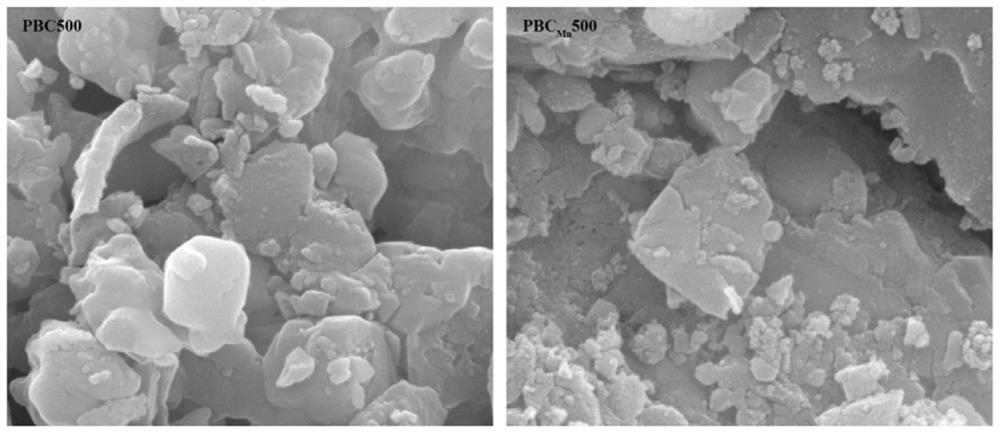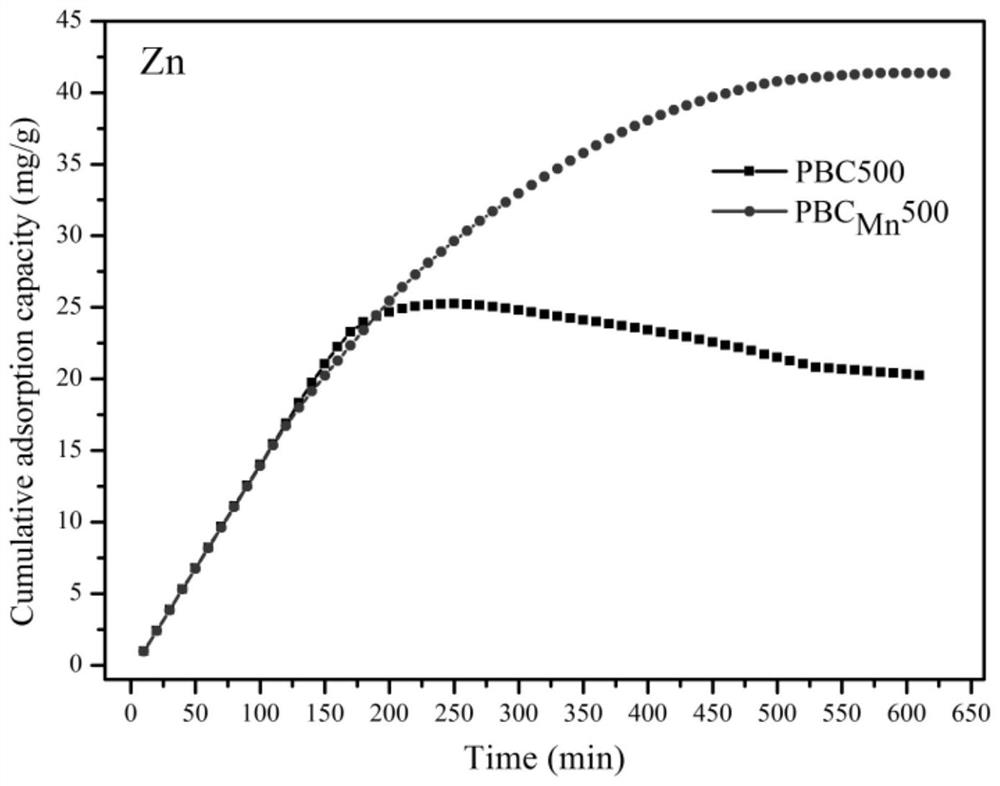Manganese-loaded plant-based biochar and preparation method and application thereof
A plant-based, biochar technology, applied in chemical instruments and methods, water pollutants, other chemical processes, etc., can solve the problems of high cost, complicated preparation process of biochar, secondary pollution, etc., and achieve a simple and suitable preparation method. In large-scale popularization and application, the effect of simple preparation process
- Summary
- Abstract
- Description
- Claims
- Application Information
AI Technical Summary
Problems solved by technology
Method used
Image
Examples
Embodiment 1
[0030] Example 1: Planting pokeweed rich in manganese
[0031] Pokeweed seeds were collected from Jishou, Hunan. Potweed cultivation involves the following steps:
[0032] (1) Select plump and undamaged seeds, soak them in concentrated sulfuric acid for about 10 minutes, and then wash them with deionized water;
[0033] (2) Sow pokeweed seeds soaked in concentrated sulfuric acid on a plastic tray filled with sterilized vermiculite, and germinate in the dark at room temperature;
[0034] (3) After the cotyledons are fully expanded, the seedlings are gradually transferred to 25%, 50%, and 100% Hoagland solutions for cultivation;
[0035] (4) When the seedlings grow to four leaves and one heart, transplant them into non-polluted soil (collected from non-polluted soil in Jiangning District, Nanjing City), and use 5mM MnCl every 6 days or so in the early stage. 2 Water the solution once, and water about 4 times in total; after the plants survive, use 5mM MnCl every half a month ...
Embodiment 2
[0037] Example 2: Preparation of manganese-loaded plant-based biochar
[0038] The preparation method of the manganese-loaded plant-based biochar comprises the following steps:
[0039] S1: Collect the mature pokeweed plants in Example 1, wash them with deionized water, put them in an oven and dry them at a temperature of 50° C. (water content is less than 2%);
[0040] S2: The dried Pokeweed plant was crushed through a 60-mesh sieve, and the under-sieve was put into a muffle furnace, and calcined at a temperature of about 500°C for about 2 hours to obtain a plant-based biochar loaded with manganese, which was named PBC Mn 500.
[0041] Using the same method, Pokeweed planted with tap water was used to make biochar with low Mn content, named PBC500.
Embodiment 3
[0042] Embodiment three: the property analysis of biochar
[0043] The pH value of biochar was measured by a suspension system of 1:10; the content of metals and mineral elements in biochar was determined by microwave digestion method and inductively coupled plasma emission spectrometer; the morphological characteristics of biochar were determined by scanning electron microscopy; BET- The specific surface area (SSA) of biochar was measured by N2 analyzer.
[0044] After determination, PBC500 and PBC Mn The pH values of PBC 500 were 12.1 and 9.8, respectively, indicating that pokeweed biochar was highly alkaline, while PBC Mn The high concentration of manganese oxide in 500 made the pH of biochar lower.
[0045] PBC500 and PBC Mn The metal and mineral element contents in 500 are listed in Table 1. It can be seen from the table that pokeweed biochar (PBC500) without Mn hyperaccumulation contains about 2.58mg / g Mn, which is because pokeweed absorbs Mn in the soil during the...
PUM
| Property | Measurement | Unit |
|---|---|---|
| Loading capacity | aaaaa | aaaaa |
| adsorption capacity | aaaaa | aaaaa |
| adsorption capacity | aaaaa | aaaaa |
Abstract
Description
Claims
Application Information
 Login to View More
Login to View More - R&D
- Intellectual Property
- Life Sciences
- Materials
- Tech Scout
- Unparalleled Data Quality
- Higher Quality Content
- 60% Fewer Hallucinations
Browse by: Latest US Patents, China's latest patents, Technical Efficacy Thesaurus, Application Domain, Technology Topic, Popular Technical Reports.
© 2025 PatSnap. All rights reserved.Legal|Privacy policy|Modern Slavery Act Transparency Statement|Sitemap|About US| Contact US: help@patsnap.com



